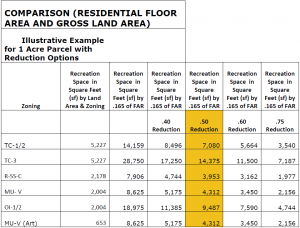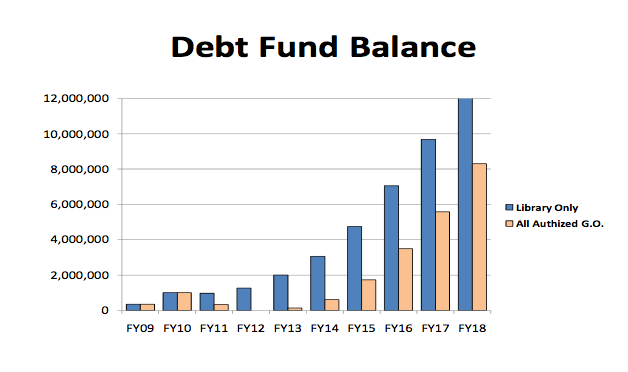Last month I took my concerns about the proposed recreation fee structure amendments to Council (Parks Impact Fee: How Many (More) Goodies Do High Density Developers Need?).
Tonight, Council revisits the proposal for possibly the last time.
Unfortunately, the issues I raised Oct. 18th were ignored by staff.
The reason I petition Council at their meetings is too make it more difficult to push problems with policy out of sight. I know that there are not that many folks watching but a public plea is harder to reject directly. It is easier, though,to blithely claim that the issues brought forth were dealt with in a memo – few folks beyond Council really read through the agendas supporting documentation – fewer spend the time to analyze the claims.
I expect that Town Manager Roger Stancil will make some generic statement this evening to the effect that “there’s nothing to worry about, move the ordinance forward” even though his staff has not addressed the concerns I raised.
I won’t be able to make this evening’s meeting so I submitted the following to Council via email (another easy to ignore avenue for public access, when are we going to get a Town sponsored ‘blog?).
Mayor and Town Council,
I’m concerned that the staff did not address some of the comments I made Oct. 18th on the proposed amendment to Section 5.5 (Recreation) of the LUMO.
I raised several broad issues and made three specific critiques, none of which were directly addressed in the staff memo before you.
From a broad perspective, I argued that the new proposed formula would not be equitable, that the majority of cost that should be borne by a developer are shifted onto the community and that delaying implementation for some zones means the Town will miss the best opportunities for equalizing funding of services between the developers and the community.
The staff memo doesn’t directly address these broad concerns.
You might recall that I asked that two contentions, that developers would not pay the fee at parity or that the delay was necessary, be supported by factual detail. A month later, staff has still offered NO SUPPORTING EVIDENCE that a higher fee – say %75 – or immediate implementation will impact proposed or ongoing projects.
This really bothers me. I hope you share my concern and, considering that the recommendations staff has made are based on these key assertions, will ask for documentation supporting their belief.
As far as an equitable allocation of costs for services, I suggest you look at the proposed fee schedule in light of the %1 Arts fee and the requests for %15 affordable housing.
At %80, the Lot #5 project would yield roughly the same amount as the %1 Arts requirement. If we use RAM Development’s figures for the costs of affordable housing (including parking), even at %100, the recreation fee is a fraction of the affordable housing cost.
Council must recognize that the cost of providing recreational opportunities in the TC zones is substantially higher than providing them elsewhere. Council has pledged to increase the number of residents Downtown and has even created the new TC-3 zone to promote higher density development to accommodate those new residents. Beyond creating a new zone, Council continues to be quite generous in stretching existing and new zones to accommodate developers and increase their profit margins, East54 and Greenbridge both being notable examples.
Unless the Council plans to siphon off funds from these zones to subsidize services elsewhere, leaving those new residents high-and-dry, the fees collected from the developers should match to some degree the costs of providing these services within Downtown. Shifting those costs off onto residents, some who are still waiting for new recreational opportunities, is not fair.
Again, there has been no direct evidence – no documented conversations, etc. – that asking developers to pay at a rate comparable to the Arts fee is a show stopper.
As far as delaying the implementation for a select few projects, the Town will miss an opportunity, as with the fee reduction, to equalize funding of needed services between the developers and the community. Projects like the University Square redevelopment are rare. There has to be a firm, factual justification for delay.
Please wait to make a final decision on this amendment until: one, staff documents their underlying assertions; two, a comparison is made between other fees/requirements Council levies on developers and a higher recreation fee allocation; three, an analysis is made to show how much revenue is lost by delaying implementation of the ordinances for projects in the pipeline.
Thank you.




